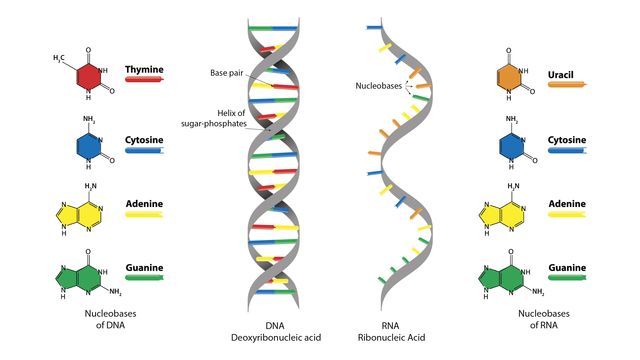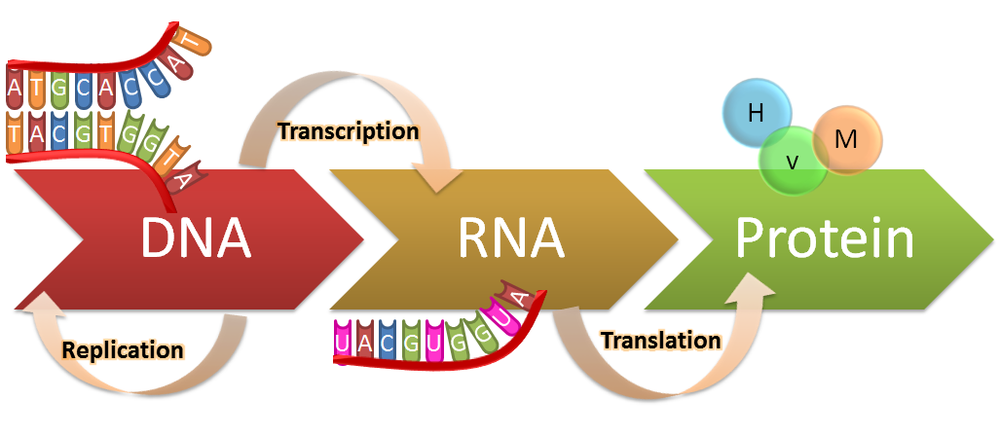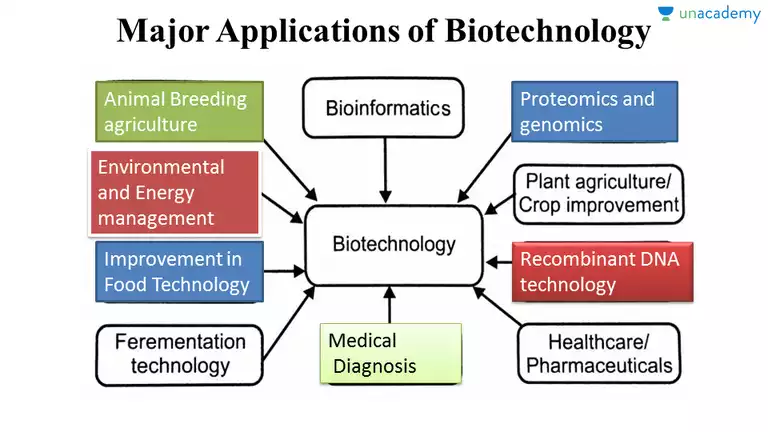Unit 6 Overview: Gene Expression and Regulation
6 min read•june 18, 2024
Jed Quiaoit
Jed Quiaoit
In Unit 6 of AP Bio, you will delve into the field of nucleic acids and gene expression. You will gain a comprehensive understanding of the structures and functions of DNA and RNA, and how they relate to an individual's genotype and phenotype. 🧬
Additionally, you will learn about the processes of protein synthesis, including transcription and translation, which are crucial for understanding gene expression. You will also study the regulation of gene expression and cell specialization, which play important roles in ensuring survival at the individual and population levels.
Following Unit 6, you will move on to Unit 7, which covers the topic of natural selection.
Sample Big Idea Questions
I'll give you my perspective on the following questions that you might encounter in this unit. At the end of the unit, I'd like you to come back to this page and see if you agree, disagree, or have something to add!
-
How does gene regulation relate to the continuity of life? Gene regulation is essential for the continuity of life because it controls the expression of genes, which determine the characteristics and functions of cells, tissues, and organisms. Through gene regulation, cells can respond to changes in their environment and adapt to new conditions. 🌱
-
How is a species’ genetic information diversified from generation to generation? A species' genetic information is diversified from generation to generation through the processes of mutation and recombination.
Mutation is the random alteration of genetic material, which can lead to the creation of new genetic variations. Recombination is the reshuffling of genetic material that occurs during the formation of eggs and sperm, which can lead to the formation of genetically unique offspring.
Together, these processes provide the genetic diversity that is necessary for the evolution of new species and adaptation to changing environments.
Unit Breakdown
6.1 Intro to DNA & RNA
DNA, or deoxyribonucleic acid, is a long polymer made up of nucleotides. Each nucleotide is made up of a sugar molecule, a phosphate group, and a nitrogenous base. There are four types of nitrogenous bases in DNA: adenine (A), thymine (T), guanine (G), and cytosine (C). The sequence of these bases, known as the genetic code, carries all of the heritable information in an organism.
RNA, or ribonucleic acid, is also a polymer made up of nucleotides. However, unlike DNA, RNA has a slightly different set of four bases: adenine (A), uracil (U), guanine (G), and cytosine (C). RNA plays a critical role in the transfer of genetic information from DNA to proteins.
The structure of DNA is a double helix, made up of two complementary strands of nucleotides that run in opposite directions. The two strands are held together by hydrogen bonds between the base pairs (A-T and C-G). This structure allows for the stability and replication of the genetic information. 😳

Source: Technology Networks
RNA, on the other hand, is typically single-stranded and can take on various secondary and tertiary structures depending on its function. For example, transfer RNA (tRNA) and ribosomal RNA (rRNA) have specific 3D structures that allow them to carry out their roles in protein synthesis.
6.2 - 6.4 Replication, Transcription (and RNA Processing), and Translation
DNA replication is the process by which cells copy their genetic material before cell division. The double helix structure of DNA allows for easy replication through a semi-conservative mechanism, where each strand serves as a template for the synthesis of a new complementary strand.
This process is initiated by the binding of enzymes called helicases to the DNA, which unwinds the double helix. Then, another enzyme called primase adds short RNA primers to the template strands, and DNA polymerase extends these primers by adding complementary nucleotides to form new strands. Finally, an enzyme called ligase seals any gaps in the new strands.
Transcription is the process by which the genetic information in DNA is used to synthesize RNA. It occurs in the nucleus of the cell and is carried out by the enzyme RNA polymerase. RNA polymerase binds to a specific region of DNA called the promoter, unwinds the double helix, and synthesizes a complementary RNA strand using one of the DNA strands as a template.
The RNA strand that is synthesized is called the primary transcript, and it typically contains both coding and non-coding regions.
RNA processing is the process by which the primary transcript is modified to form functional RNA molecules. This includes the removal of introns (non-coding regions) and the joining of exons (coding regions) to form a mature RNA molecule.
This process also includes the addition of a 5' cap and a poly(A) tail to the RNA, which help to protect it from degradation and aid in its transport out of the nucleus. Once the processing is complete, the mature RNA molecule can then be transported to the cytoplasm for translation.
Translation is the process by which the genetic information in RNA is used to synthesize proteins. It occurs in the cytoplasm and is carried out by ribosomes, which are composed of both RNA and protein. The ribosome reads the sequence of nucleotides in the RNA and matches it to the sequence of amino acids in a protein. 📜
This process is guided by transfer RNA (tRNA), which carries the appropriate amino acids to the ribosome and adds them to the growing protein chain. Once the ribosome reaches a stop codon in the RNA, the protein is complete and is then modified and folded into its functional 3-dimensional structure.

Source: Genius
6.5 - 6.7 Gene Expression, Mutations, and Cell Specialization
Regulatory sequences are an important aspect of gene expression, as they control when and where a gene is transcribed. These sequences are located near the promoter region of a gene and interact with regulatory proteins, such as transcription factors, to control the initiation of transcription. These regulatory proteins bind to specific sequences within the regulatory regions and can either enhance or repress the activity of the promoter, resulting in the activation or repression of the gene.
There are different types of regulatory sequences. Enhancers, for example, are sequences that increase the activity of a promoter, while silencers decrease it.
Regulatory sequences are not limited to the immediate vicinity of the gene. Some sequences known as distal enhancers can be located far away from the gene itself but still have an effect on its expression. The flexibility of this mechanism allows for the coordination of the expression of multiple genes in response to various environmental cues and developmental stages.
The expression of genes, or the process by which genetic information is used to synthesize proteins, can vary among organisms, resulting in different phenotypes. Phenotype refers to the observable characteristics of an organism, such as its physical appearance, behavior, and biochemistry. 🔬
Gene expression can be regulated at various levels, including transcription, RNA processing, and translation. Differences in the expression of genes can be caused by mutations in the DNA sequence, changes in the activity of regulatory proteins, or differences in the availability of certain molecules or environmental conditions.
For example, the color of a flower can be determined by the expression of specific genes that control the production of pigments. A mutation in one of these genes can result in a different color flower, even though the genetic information for the pigmentation is still present. Similarly, the expression of genes involved in metabolism can result in organisms that are better adapted to certain environments, such as a polar bear's ability to survive in cold temperatures. Overall, variations in gene expression play a crucial role in the diversity of life and the evolution of organisms. 🌼
6.8 Biotechnology
Biotechnology is the use of living organisms, cells, or biological systems to create new products, processes, or technologies. It encompasses a wide range of applications such as medicine, agriculture, environmental management, and industrial production. Some examples of biotechnological applications include genetic engineering, fermentation, and the production of biopharmaceuticals.
Biotechnology also includes techniques like recombinant DNA technology, PCR, gel electrophoresis, and gene cloning which are used to manipulate and study genetic material.
It is important to note that while biotechnology has the potential to bring many benefits to society, it also raises important ethical, legal, and social issues that need to be carefully considered. 💊

Source: Unacademy
<< Hide Menu
Unit 6 Overview: Gene Expression and Regulation
6 min read•june 18, 2024
Jed Quiaoit
Jed Quiaoit
In Unit 6 of AP Bio, you will delve into the field of nucleic acids and gene expression. You will gain a comprehensive understanding of the structures and functions of DNA and RNA, and how they relate to an individual's genotype and phenotype. 🧬
Additionally, you will learn about the processes of protein synthesis, including transcription and translation, which are crucial for understanding gene expression. You will also study the regulation of gene expression and cell specialization, which play important roles in ensuring survival at the individual and population levels.
Following Unit 6, you will move on to Unit 7, which covers the topic of natural selection.
Sample Big Idea Questions
I'll give you my perspective on the following questions that you might encounter in this unit. At the end of the unit, I'd like you to come back to this page and see if you agree, disagree, or have something to add!
-
How does gene regulation relate to the continuity of life? Gene regulation is essential for the continuity of life because it controls the expression of genes, which determine the characteristics and functions of cells, tissues, and organisms. Through gene regulation, cells can respond to changes in their environment and adapt to new conditions. 🌱
-
How is a species’ genetic information diversified from generation to generation? A species' genetic information is diversified from generation to generation through the processes of mutation and recombination.
Mutation is the random alteration of genetic material, which can lead to the creation of new genetic variations. Recombination is the reshuffling of genetic material that occurs during the formation of eggs and sperm, which can lead to the formation of genetically unique offspring.
Together, these processes provide the genetic diversity that is necessary for the evolution of new species and adaptation to changing environments.
Unit Breakdown
6.1 Intro to DNA & RNA
DNA, or deoxyribonucleic acid, is a long polymer made up of nucleotides. Each nucleotide is made up of a sugar molecule, a phosphate group, and a nitrogenous base. There are four types of nitrogenous bases in DNA: adenine (A), thymine (T), guanine (G), and cytosine (C). The sequence of these bases, known as the genetic code, carries all of the heritable information in an organism.
RNA, or ribonucleic acid, is also a polymer made up of nucleotides. However, unlike DNA, RNA has a slightly different set of four bases: adenine (A), uracil (U), guanine (G), and cytosine (C). RNA plays a critical role in the transfer of genetic information from DNA to proteins.
The structure of DNA is a double helix, made up of two complementary strands of nucleotides that run in opposite directions. The two strands are held together by hydrogen bonds between the base pairs (A-T and C-G). This structure allows for the stability and replication of the genetic information. 😳

Source: Technology Networks
RNA, on the other hand, is typically single-stranded and can take on various secondary and tertiary structures depending on its function. For example, transfer RNA (tRNA) and ribosomal RNA (rRNA) have specific 3D structures that allow them to carry out their roles in protein synthesis.
6.2 - 6.4 Replication, Transcription (and RNA Processing), and Translation
DNA replication is the process by which cells copy their genetic material before cell division. The double helix structure of DNA allows for easy replication through a semi-conservative mechanism, where each strand serves as a template for the synthesis of a new complementary strand.
This process is initiated by the binding of enzymes called helicases to the DNA, which unwinds the double helix. Then, another enzyme called primase adds short RNA primers to the template strands, and DNA polymerase extends these primers by adding complementary nucleotides to form new strands. Finally, an enzyme called ligase seals any gaps in the new strands.
Transcription is the process by which the genetic information in DNA is used to synthesize RNA. It occurs in the nucleus of the cell and is carried out by the enzyme RNA polymerase. RNA polymerase binds to a specific region of DNA called the promoter, unwinds the double helix, and synthesizes a complementary RNA strand using one of the DNA strands as a template.
The RNA strand that is synthesized is called the primary transcript, and it typically contains both coding and non-coding regions.
RNA processing is the process by which the primary transcript is modified to form functional RNA molecules. This includes the removal of introns (non-coding regions) and the joining of exons (coding regions) to form a mature RNA molecule.
This process also includes the addition of a 5' cap and a poly(A) tail to the RNA, which help to protect it from degradation and aid in its transport out of the nucleus. Once the processing is complete, the mature RNA molecule can then be transported to the cytoplasm for translation.
Translation is the process by which the genetic information in RNA is used to synthesize proteins. It occurs in the cytoplasm and is carried out by ribosomes, which are composed of both RNA and protein. The ribosome reads the sequence of nucleotides in the RNA and matches it to the sequence of amino acids in a protein. 📜
This process is guided by transfer RNA (tRNA), which carries the appropriate amino acids to the ribosome and adds them to the growing protein chain. Once the ribosome reaches a stop codon in the RNA, the protein is complete and is then modified and folded into its functional 3-dimensional structure.

Source: Genius
6.5 - 6.7 Gene Expression, Mutations, and Cell Specialization
Regulatory sequences are an important aspect of gene expression, as they control when and where a gene is transcribed. These sequences are located near the promoter region of a gene and interact with regulatory proteins, such as transcription factors, to control the initiation of transcription. These regulatory proteins bind to specific sequences within the regulatory regions and can either enhance or repress the activity of the promoter, resulting in the activation or repression of the gene.
There are different types of regulatory sequences. Enhancers, for example, are sequences that increase the activity of a promoter, while silencers decrease it.
Regulatory sequences are not limited to the immediate vicinity of the gene. Some sequences known as distal enhancers can be located far away from the gene itself but still have an effect on its expression. The flexibility of this mechanism allows for the coordination of the expression of multiple genes in response to various environmental cues and developmental stages.
The expression of genes, or the process by which genetic information is used to synthesize proteins, can vary among organisms, resulting in different phenotypes. Phenotype refers to the observable characteristics of an organism, such as its physical appearance, behavior, and biochemistry. 🔬
Gene expression can be regulated at various levels, including transcription, RNA processing, and translation. Differences in the expression of genes can be caused by mutations in the DNA sequence, changes in the activity of regulatory proteins, or differences in the availability of certain molecules or environmental conditions.
For example, the color of a flower can be determined by the expression of specific genes that control the production of pigments. A mutation in one of these genes can result in a different color flower, even though the genetic information for the pigmentation is still present. Similarly, the expression of genes involved in metabolism can result in organisms that are better adapted to certain environments, such as a polar bear's ability to survive in cold temperatures. Overall, variations in gene expression play a crucial role in the diversity of life and the evolution of organisms. 🌼
6.8 Biotechnology
Biotechnology is the use of living organisms, cells, or biological systems to create new products, processes, or technologies. It encompasses a wide range of applications such as medicine, agriculture, environmental management, and industrial production. Some examples of biotechnological applications include genetic engineering, fermentation, and the production of biopharmaceuticals.
Biotechnology also includes techniques like recombinant DNA technology, PCR, gel electrophoresis, and gene cloning which are used to manipulate and study genetic material.
It is important to note that while biotechnology has the potential to bring many benefits to society, it also raises important ethical, legal, and social issues that need to be carefully considered. 💊

Source: Unacademy

© 2025 Fiveable Inc. All rights reserved.